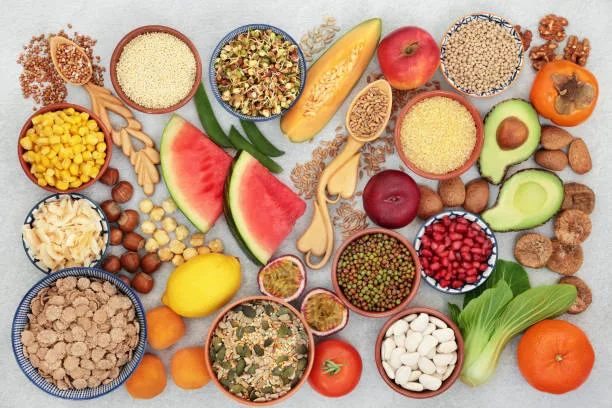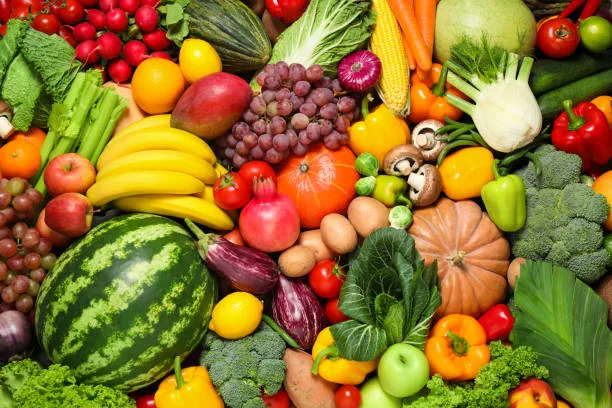Diabetes and obesity have become two of the most pressing health concerns of our time. An estimated 34 million Americans have diabetes, and 88 million adults in the US are prediabetic. Being overweight significantly raises the risk for developing type 2 diabetes as excess body fat leads to increased insulin resistance. For those already living with diabetes, losing even a moderate amount of weight can dramatically improve blood sugar control. Unfortunately, weight loss can be extremely challenging for individuals with diabetic weight loss due to the impact this disease has on metabolism and hunger signals. This underscores the importance of making healthy diet choices to manage diabetes and facilitate weight loss.
When it comes to eating well for diabetes, we often focus on traditional vegetables like spinach, kale and carrots. However, there is an exciting world of unconventional vegetables that can be absolute game-changers for weight loss among diabetics. These powerhouse veggies provide exceptional nutritional value while aiding blood sugar regulation. In this article, we will explore five underground heroes and discuss creative ways to incorporate them into your diet to boost weight loss.

The Power of Unconventional Vegetables in Diabetic Weight Loss and Management
Vegetables are a crucial component of any healthy diet, but they take on added significance for people with diabetes. Unfortunately, the standard American diet does not contain enough of these nutritional powerhouses. To properly regulate blood sugar levels and facilitate weight loss, vegetables should dominate our plates at mealtimes. The fiber, vitamins, minerals, antioxidants and phytochemicals found abundantly in vegetables make them perfectly suited for diabetics. Additionally, most vegetables boast low calorie counts and high water content – two attributes critical for shedding excess pounds.
Different vegetables impact the body in different ways thanks to their unique nutritional profiles. By enjoying a diverse array of produce, diabetics can better manage blood sugar swings while accessing a broad spectrum of beneficial plant compounds. Some vegetables contain specific antioxidants and anti-inflammatory agents that protect cells from the oxidative damage caused by high blood sugar levels. Certain veggies feature high fiber content that helps regulate digestion and insulin response. Others provide important minerals like magnesium and chromium that increase insulin sensitivity. Specific varieties also contain blood sugar regulating compounds like chlorogenic acid and aminosalicylic acids.
Let’s take a look at five unconventional vegetables that should be part of every diabetic diet. These nutritional rockstars not only provide exceptional health perks, but they can also aid weight loss efforts.
Unconventional Vegetable 1: Jicama
Jicama is an juicy, sweet and crunchy tuber vegetable originally cultivated in Mexico. This diabetic superfood delivers some amazing nutritional benefits. A one cup serving contains over 40% of your daily vitamin C needs along with notable amounts of vitamin E, B-complex vitamins, potassium and magnesium. Jicama has an extremely low glycemic index, meaning it does not cause sharp spikes in blood sugar. The high water and fiber content of jicama fills you up fast, curbing unhealthy cravings. This veggie also features the prebiotic inulin, which supports immunity and healthy digestion.
This versatile veggie works nicely on its own as a snack or slicved into salads. For a nutrient-packed light lunch, simply dice jicama, mix it with chickpeas, avocado chunks, and chili-lime dressing. You can also add cubed jicama into your morning fruit smoothies for a boost of veggies. Slice jicama into sticks and enjoy with hummus, baked tofu or nut butter. Finally, try using jicama in place of water chestnuts in stir fry dishes.
The powerful blend of water, fiber and nutrients in jicama make it an unbeatable choice for diabetics wanting to lose weight. It fills up your stomach without overloading you on carbohydrates or calories. This makes it far superior to snacking mindlessly on carb-heavy crackers or pretzels. Additionally, efficient digestion decreases inflammation and bloating leading you to both look and feel leaner.

Unconventional Vegetable 2: Kohlrabi
Kohlrabi is an odd-looking bulbous veggie surrounded by leafy green shoots that protrude from a pale green or purplish round base. Native to northern Europe, kohlrabi has been popular in India, Germany, and the Mediterranean region for ages but remains relatively obscure in the US. This unsung hero boasts an impressive nutritional profile delivering fiber, potassium, vitamin C and antioxidants.
Kohlrabi leaves offer their own unique health perks and taste delicious when made into veggie stir fries or chilled kale salads. The bulb can be enjoyed raw for crunch, roasted whole, pureed into soups, steamed, sautéed or spiraled into veggie noodles. Slice raw kohlrabi rounds and use them as veggie cups for dips. Make an easy diabetic-friendly lunch by stuffing kohlrabi boats with tuna salad or chicken salad. For a tasty low-carb hash, finely chop kohlrabi and sauté it with diced bacon, wilted spinach and eggs.
Kohlrabi aids weight loss efforts among diabetics in a few key ways. Firstly, its high fiber content creates a very satisfying and filling food helping limit excessive calorie consumption. Secondly, animal research indicates kohlrabi activates brown fat which plays an important role in weight regulation. Thirdly, the phytochemicals in kohlrabi enhance detoxification which reduces inflammation – a key contributor to obesity and high blood sugar. Finally, kohlrabi’s nutrients support tissue regeneration and cell rejuvenation – vital processes for maintaining long-term weight loss success.
Unconventional Vegetable 3: Romanesco Broccoli
Romanesco broccoli boasts an eye-catching appearance with spiraling lime green fractal-like florets arranged in an intricate cone shape. Its unique geometry reflects the natural tendency for efficient spiraling patterns like nautilus shells and galaxies. Beyond beauty and biodiversity, Romanesco delivers substantial nutritional and health benefits.
This fluorescent fireworks veggie provides a hefty dose of fiber, vitamin C, vitamin K, plus anti-inflammatory and antioxidant compounds like sulforaphane and kaempferol. It contains a compound known as glucoraphanin which aids blood sugar regulation. Animal studies demonstrate Romanesco’s ability to decrease oxidative stress, insulin resistance, inflammation and kidney damage in diabetic models.
Romanesco brings crunch and flair to raw veggie platters and shines as a pizza topping. Grill thick slices brushed with olive oil as a hearty, healthy side dish. For a colorful one-pot meal, sauté Romanesco with chickpeas, lemon, garlic and Italian seasoning. Steam florets until just tender then puree with broth into a velvety, low-carb soup. Toss roasted Romanesco with whole grain pasta, walnuts, raisins and tangy feta cheese.
This visually striking cruciferous veggie facilitates weight loss through multiple mechanisms. It fills up your plate with a very low calorie, high fiber food that satisfies hunger. The rich phytochemical profile provides blood sugar regulating, insulin sensitizing and inflammation reducing activity – all benefits for easing weight loss among diabetics. The bright green color indicates abundant antioxidants that protect cells from oxidative damage that can interfere with weight regulation. Finally, animal studies confirm Romanesco’s ability to decrease body weight even on a high fat diet making it a champion for weight management among diabetics.

Unconventional Vegetable 4: Watercress
Do not let watercress’ delicate leafy appearance deceive you – this green goddess packs some serious nutritional might! This fast-growing, aquatic plant has been cherished for centuries as a healing food, especially helpful for improving circulation and liver function. Incredibly, watercress contains higher levels of immune boosting and antioxidant compounds than many other fruits and vegetables. It provides vitamins A, B-complex, C, E, and K plus essential minerals calcium, magnesium, and manganese.
Rich in compounds called glucosinolates, watercress offers strong anti-diabetic effects. Studies show daily watercress consumption reduces fasting blood glucose and A1C levels while improving glucose tolerance. Watercress also demonstrates powerful anti-inflammatory, antioxidant, and lipid-lowering activity – all extremely beneficial for diabetics. This bitterness green truly earns it’s superfood status.
Mince watercress and mix it into egg salad, tuna salad, or chicken salad to double or triple the nutrient density. Blend watercress into energizing green smoothies and juices. Toss minced watercress into soups just before serving so it wilts but still retains some crunch. Stack watercress leaves with sliced peaches, blue cheese, candied pistachios and smoked salmon for an incredible flavor and texture contrast. Mix spicy arugula with mild baby spinach and watercress for the base of an antioxidant-loaded salad.
For diabetics focused on shedding pounds, watercress accelerates success on multiple fronts. Firstly, it provides intense nutrition with very minimal calories making it an ideal choice for calorie-conscious dieters needing dense nutrition. Secondly, research confirms it lowers elevated blood glucose and improves insulin sensitivity – two pivotal benchmarks for weight loss among diabetics. Thirdly, its high antioxidant content protects against cellular damage that can stall weight loss efforts. Finally, by lowering systemic inflammation and improving detoxification processes, watercress facilitates long-term weight regulation.
Unconventional Vegetable 5: Daikon Radish
Part of the Brassica family, Daikon radishes resemble large white carrots averaging 15-20 inches in length with crisp juicy flesh and a refreshingly clean biting taste. These Japanese radishes contain enzymes beneficial for digestion and compounds that prevent the formation of dangerous chemicals within the body. Additionally, the high water content and diuretic action helps flush toxins and excess fluid responsible for bloating.
Daikon radishes supply a respectable amount of fiber, vitamin C, potassium, copper and folate along with special compounds called isothiocyanates. These special compounds exhibit anti-diabetic properties by improving carbohydrate metabolism and enhancing insulin production. Animal studies demonstrate Daikon juice lowers blood glucose levels while protecting kidney function.
Thinly slice Daikon to spice up salads or soak the slices in ice water then grate into slaws. Alternatively, use a spiral slicer to cut into curly veggie noodles then lightly sauté with sesame oil and garlic. Ferment shredded Daikon into a probiotic rich, tangy kimchi ideal for boosting immune function. For light lunch, spread smashed avocado over Daikon crackers or enjoy the spicy Korean condiment kimchi fried Daikon cubes.
Daikon radish assists diabetics with weight loss through a combination of nutritional mechanisms. Firstly, the high fiber and water content provides bulk and satiety without weighing you down with heavy calories. Secondly, the enzymes and special phytochemicals aid digestion and detoxification – two vital components for healthy metabolism and efficient calorie burning. Thirdly, animal research demonstrates Daikon extracts lower blood sugar and protect insulin-producing cells helping regulate fat storage signals. Finally, by combatting cellular inflammation and oxidative damage, Daikon facilitates reliable and steady fat loss over time.

Final Thoughts
When dealing with diabetes and working towards weight loss, we need to pull out all the nutritional stops. Instead of relying solely on traditional veggies, begin exploring the world of unconventional and “forgotten” vegetables. Many of these provide exceptional nutritional advantages specifically catering to the needs of diabetics. As discussed here, relatively unfamiliar veggies like jicama, kohlrabi, Romanesco broccoli, watercress and Daikon radish offer incredible benefits for regulating blood sugar, reducing inflammation and supercharging nutrition. By incorporating more diversity into your vegetable choices, you supply your body with a wide spectrum of plant-based compounds and nutrients instrumental for conquering weight loss obstacles. For more healthy tips and diabetic-friendly recipes be sure to subscribe to our newsletter and explore the resources on our website. Here’s to health!
Join us!
Want to keep learning about transforming your health with powerhouse foods and clinically proven lifestyle strategies? Subscribe to our email newsletter and receive our free Top Ten Tips guide for beating diabetes and losing weight. We deliver inspiring content weekly straight to your inbox. Don’t miss out!
While you’re here, explore our website for even more science-backed advice on overcoming weight loss barriers whether you live with diabetes or not. Get started with our detailed post explaining the top reasons for excess weight and specific tactics to begin addressing those issues. Still hungry for more life-changing wisdom? Check out our roundup of unconventional superfoods that accelerate weight loss results better than anything you’ve ever tried. We are fully dedicated to providing the practical tools and motivational resources to achieve your health goals.
Thank you for reading this post, don't forget to subscribe to our free newsletter
!

